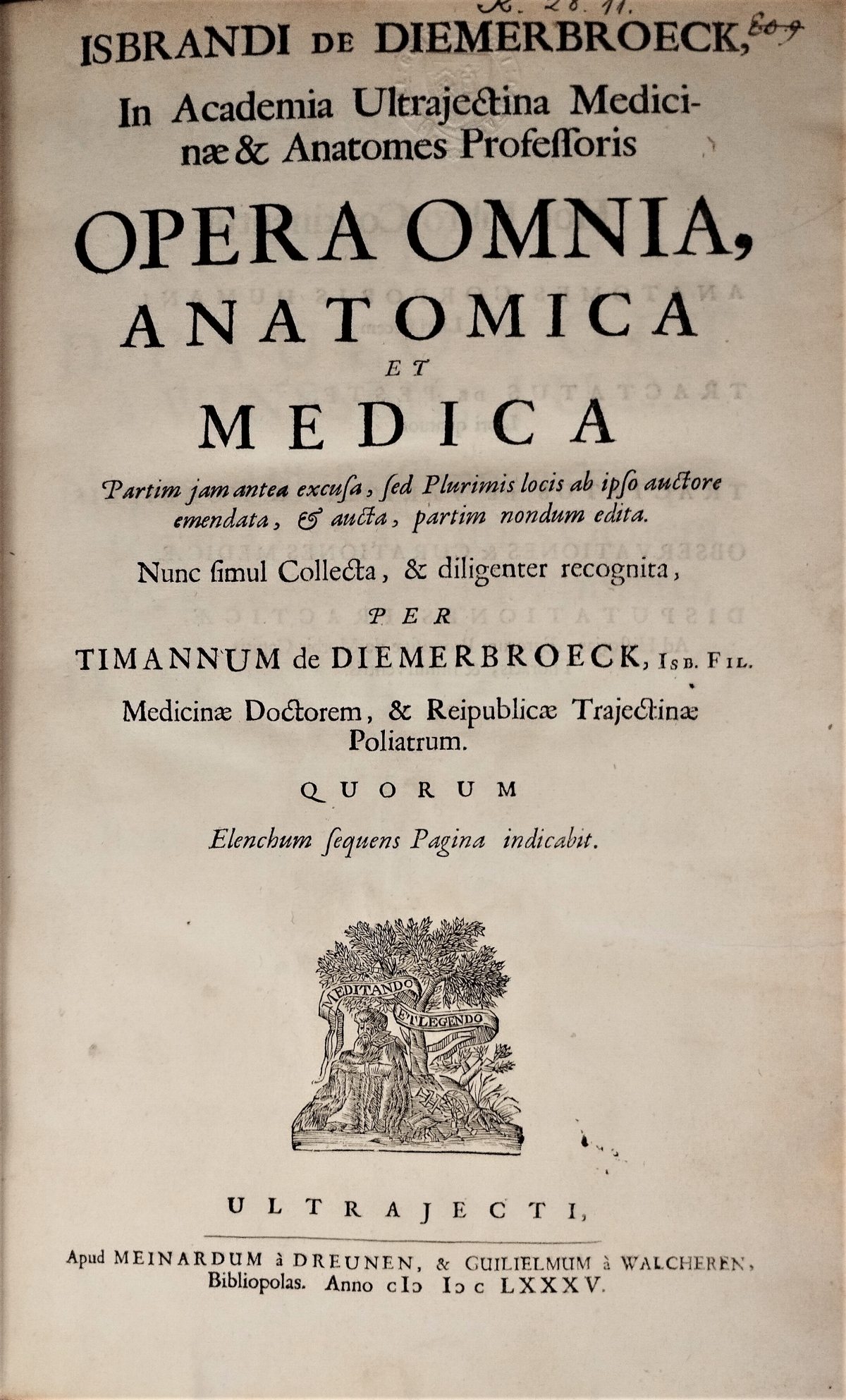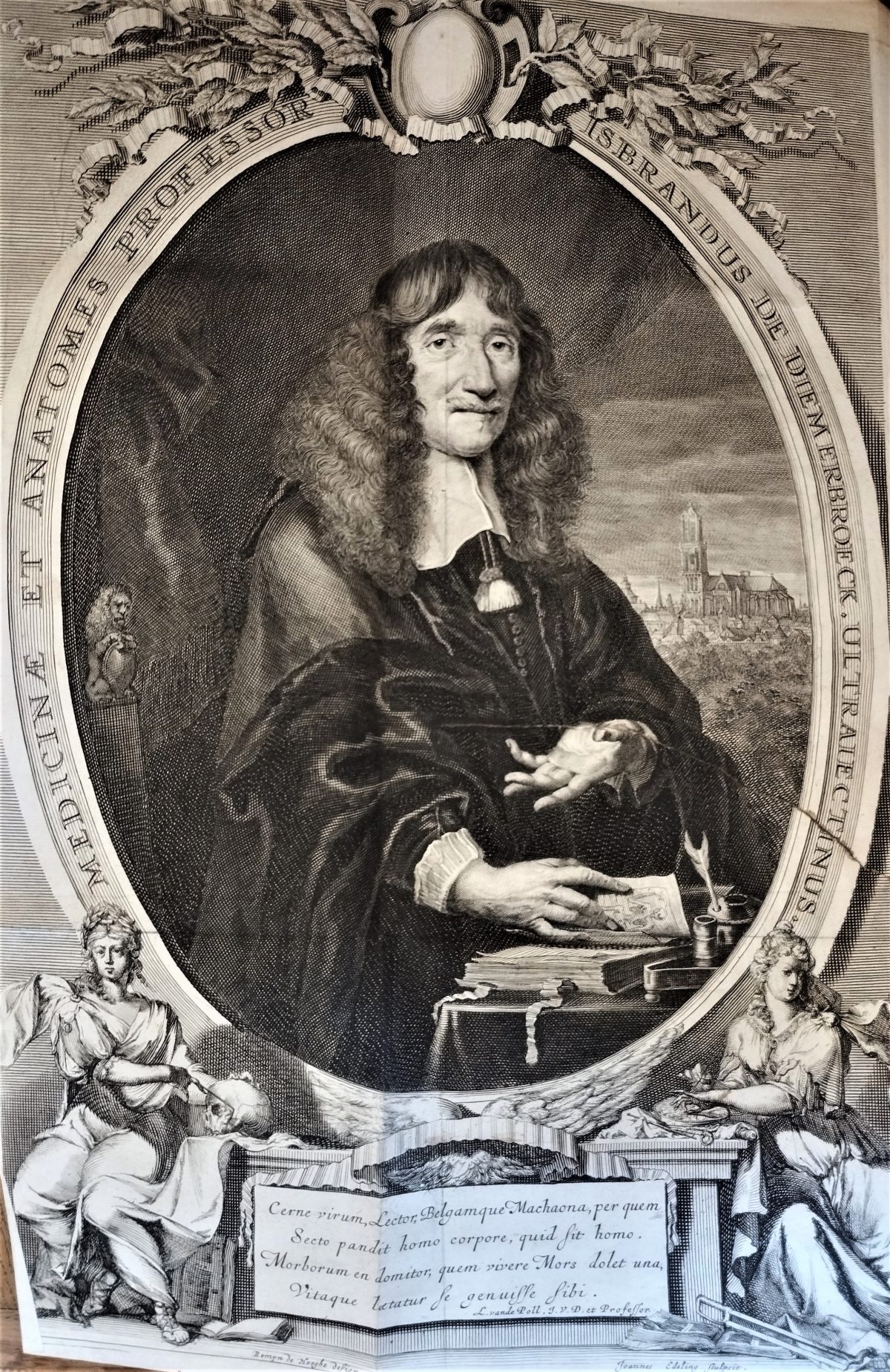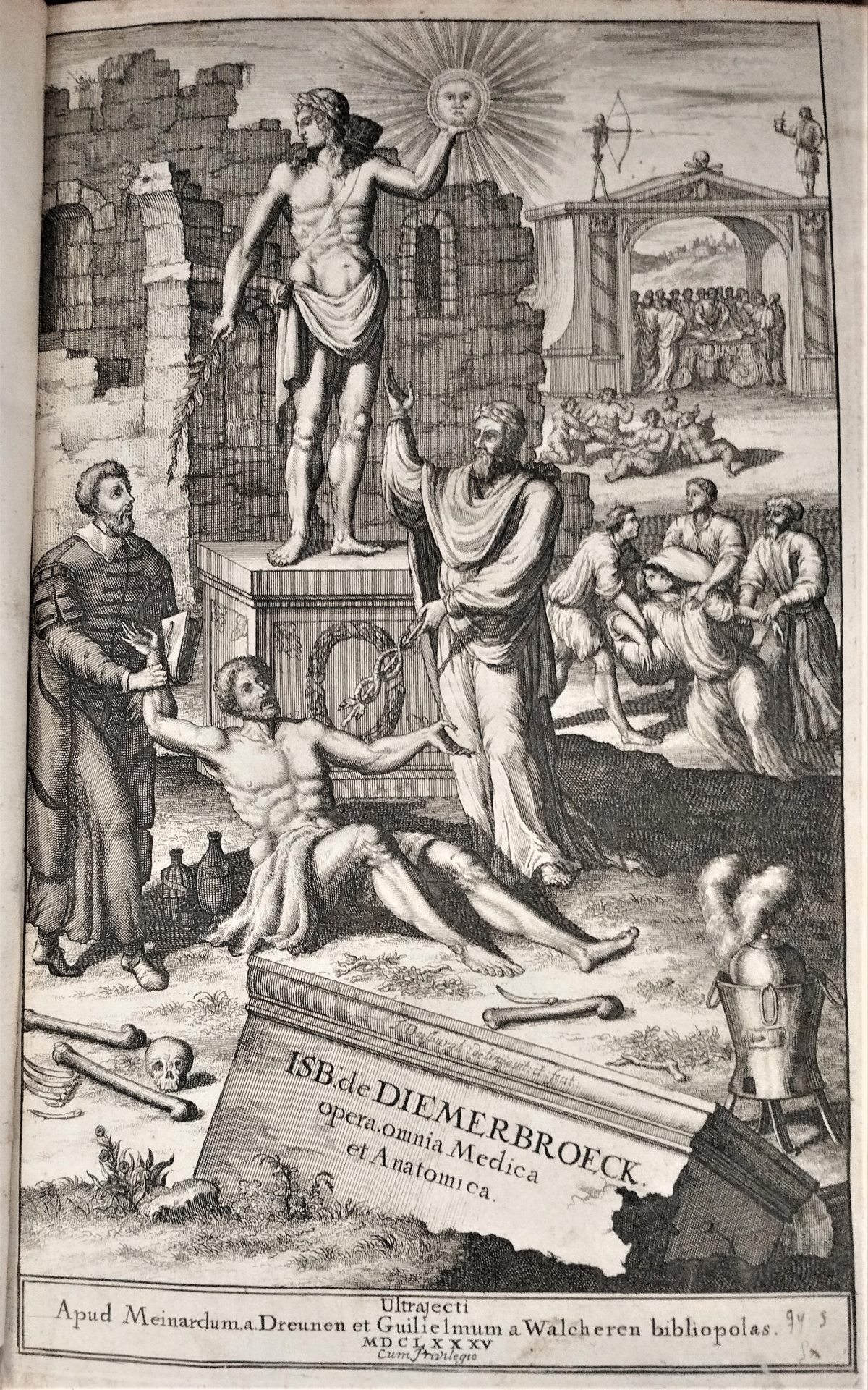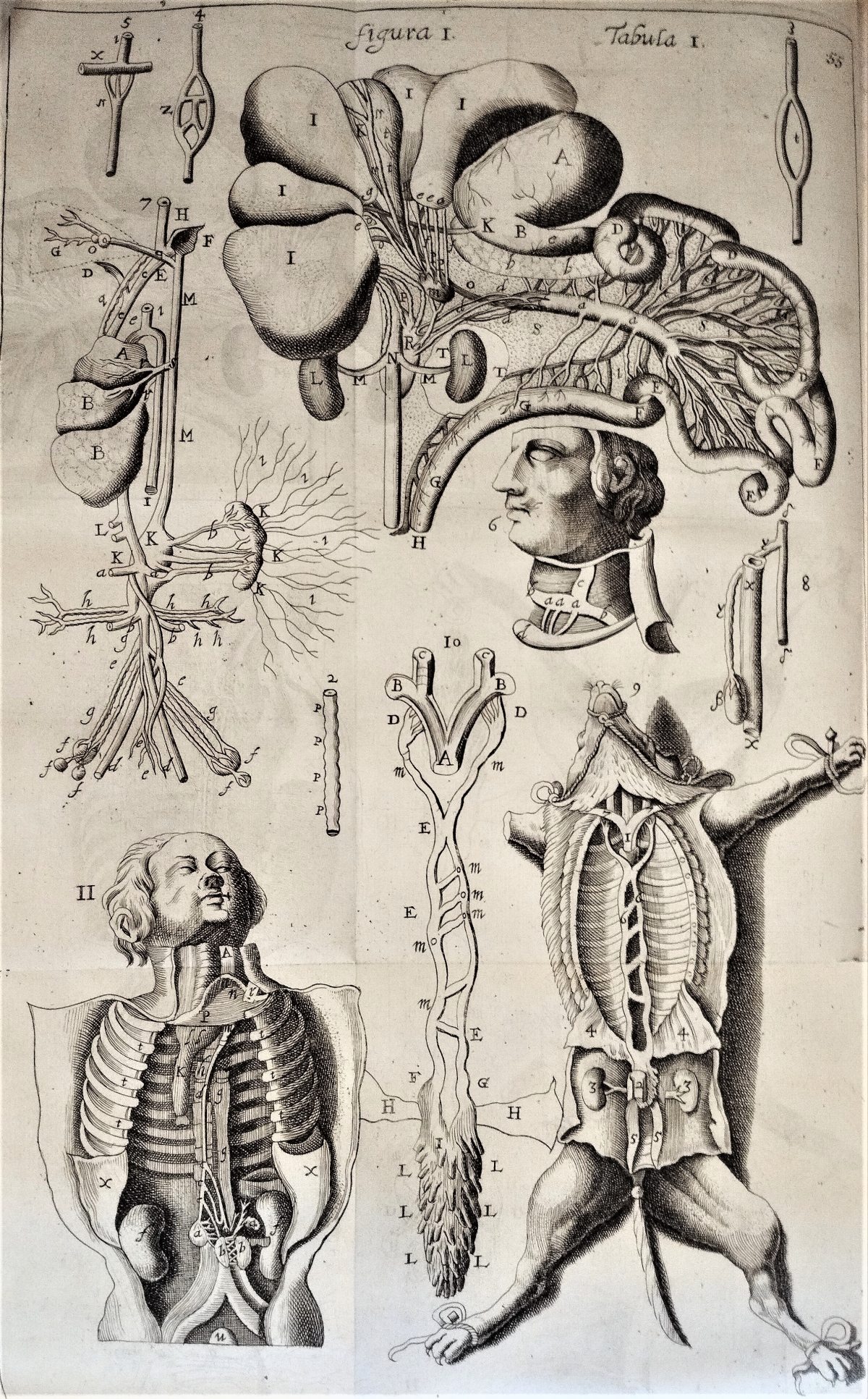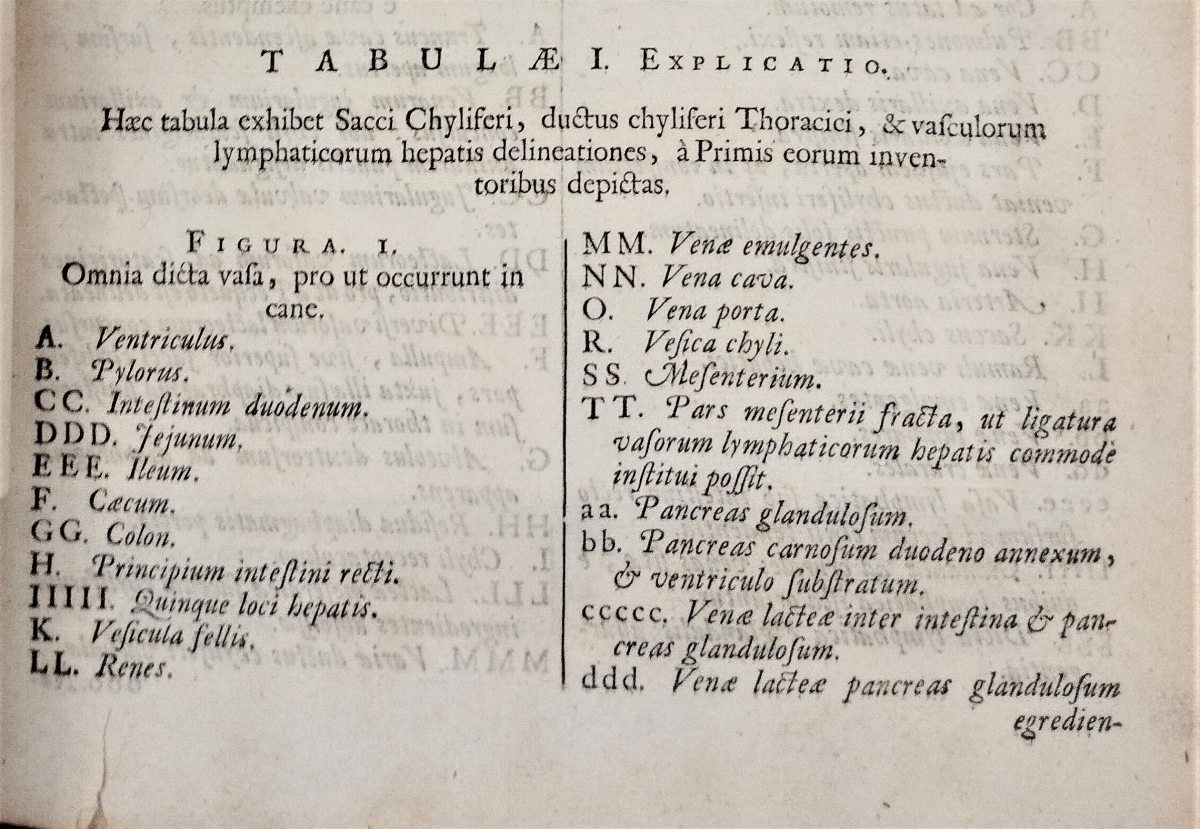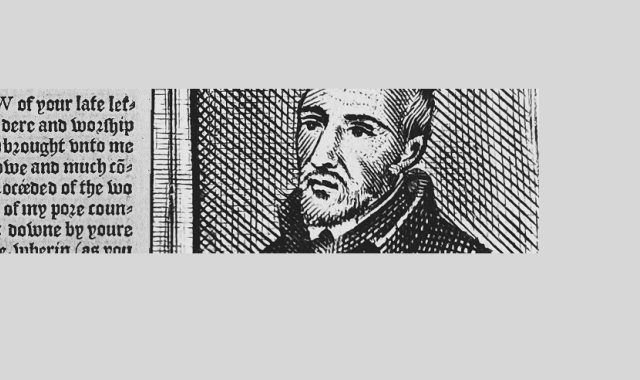Witness to the Black Death
Opera omnia, anatomica et medica (Complete works, anatomical and medical), by Ysbrand van Diemerbroeck. Printed in Utrecht by Meinardus van Dreunen and Gulielmus à Walcheren, 1685. Lower Library, K.28.11
Ysbrand van Diemerbroeck (1609–1674) was a Dutch physician, professor of medicine at Utrecht University, and author of several works on medicine, disease, and anatomy. After Ysbrand van Diemerbroeck’s death, his son, Timann van Diemerbroeck, collected all his father’s medical works together to be published in one volume. Some criticised his works, claiming that not all his discoveries were accurate (and that some were entirely made up), and that he was prone to ill-timed and tedious digressions.1 Nonetheless, his De peste, published in 1646, is a vivid account of his early experiences as physician, treating victims of the Black Death, and this remains a crucial source for understanding the effects and spread of the plague in the seventeenth century. Although van Diemerbroeck saw the plague as an act of God and a result of man’s sins, he also was aware of the need to find out how a person became affected. He theorised that it was an airborne disease, transmitted through the breath from one body to another.2 He also noted the increase in insects, especially mosquitoes, which appeared in the town prior to the outbreak, although he seems to have regarded this as an omen rather than potentially linked to transmission of the illness.
In the gallery you can see the details of the thoracic duct, and the lymph vessels of the liver, as they appear in both a human and in a dog. Several of these images are based on the work of Jean Pecquet (1622–1674), who had discovered the thoracic duct whilst he was studying the research of Gaspare Aselli. Pecquet had been instrumental in providing anatomical evidence for Harvey’s theory about blood circulation, and in highlighting the flaws in Galenic physiology.3 Both Pecquet and van Diemerbroeck made ground-breaking discoveries about the absorption of nutrients from food, in part through conducting vivisections on dogs.
This book was donated to the library by Thomas Atwood, who achieved his M.B. at Gonville and Caius in 1696.
Mite or mite not << Witness to the Black Death >> Hoboken’s valves
- Nicolas François Joseph Eloy, Dictionnaire historique de la médecine ancienne et moderne (Paris: H. Hoyois, 1778), 2:48–49.
- Leo Noordegraaf and Gerrit Valk, De gave Gods: de pest in Holland vanaf de late middeleeuwen (Amsterdam: Bert Bakker, 1996), 31–36.
- Sarah J. Lewis, ‘Jean Pecquet (1622-1674) and the Thoracic Duct: The Controversy over the Circulation of the Blood and Lymph in Seventeenth-Century Europe’ (PhD diss., Yale University, 2003), 1–3.


